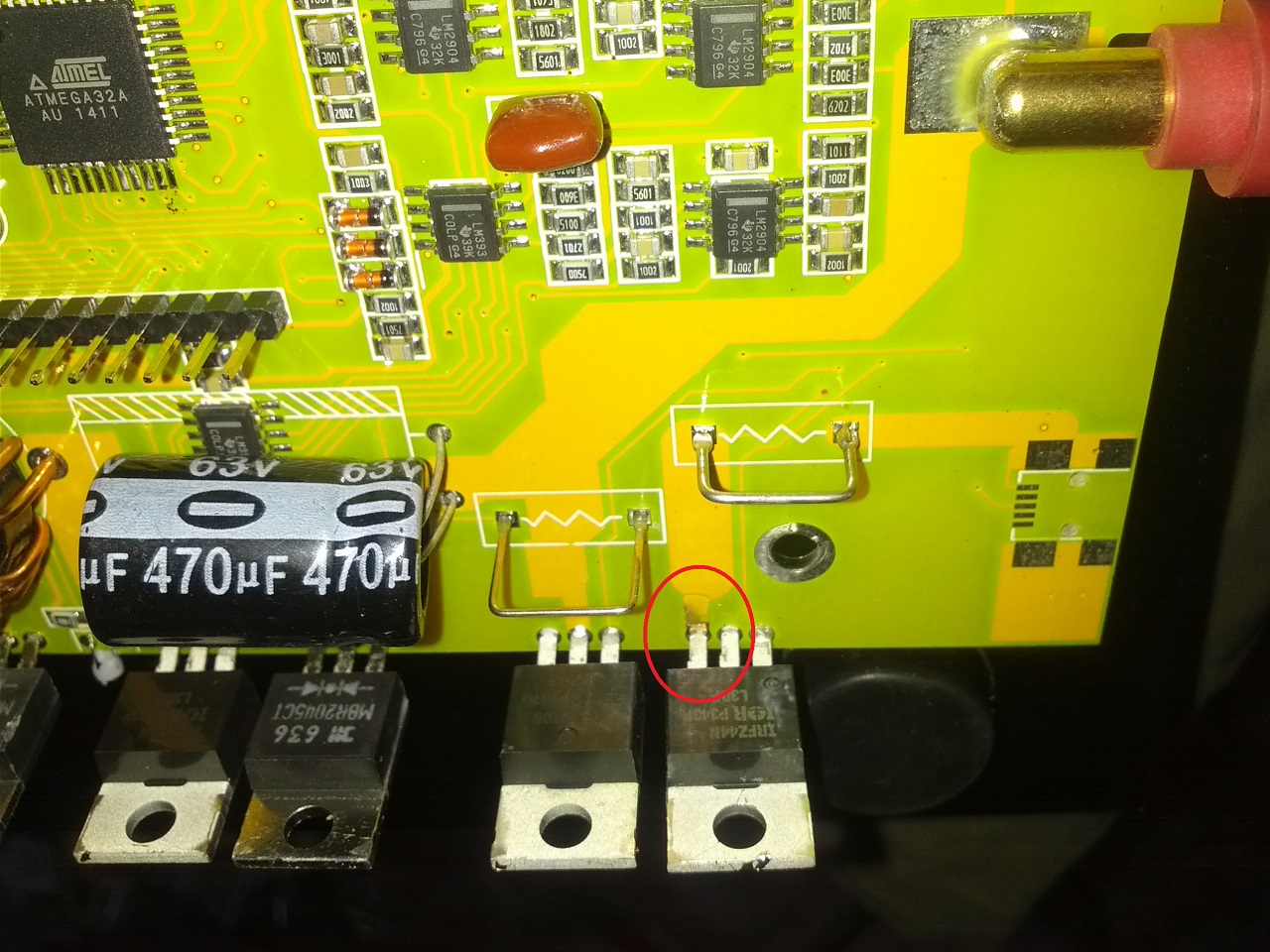inedible
100 W
dnmun said:we should be able to fix the shorted charger too. i suspect the isolation mosfet on the output is burned so just replacing that should make it work again.
Indeed you're probably right.

At the very least this trace is blown. The fet it's connected to goes to the negative lead of the output. It's a irfz44n, and the charger uses two of them. One at the input, one at the output. So I figured between four fets, I'd hopefully have two working ones, but that doesn't seem to be the case. I tried testing the fets from my first blown charger, using a youtube guide that showed how to use my dmm's diode test setting to test the fet. That doesn't seem to work though, none of these fets will turn on. What are the chances I blew both fets AND a trace on the board?

